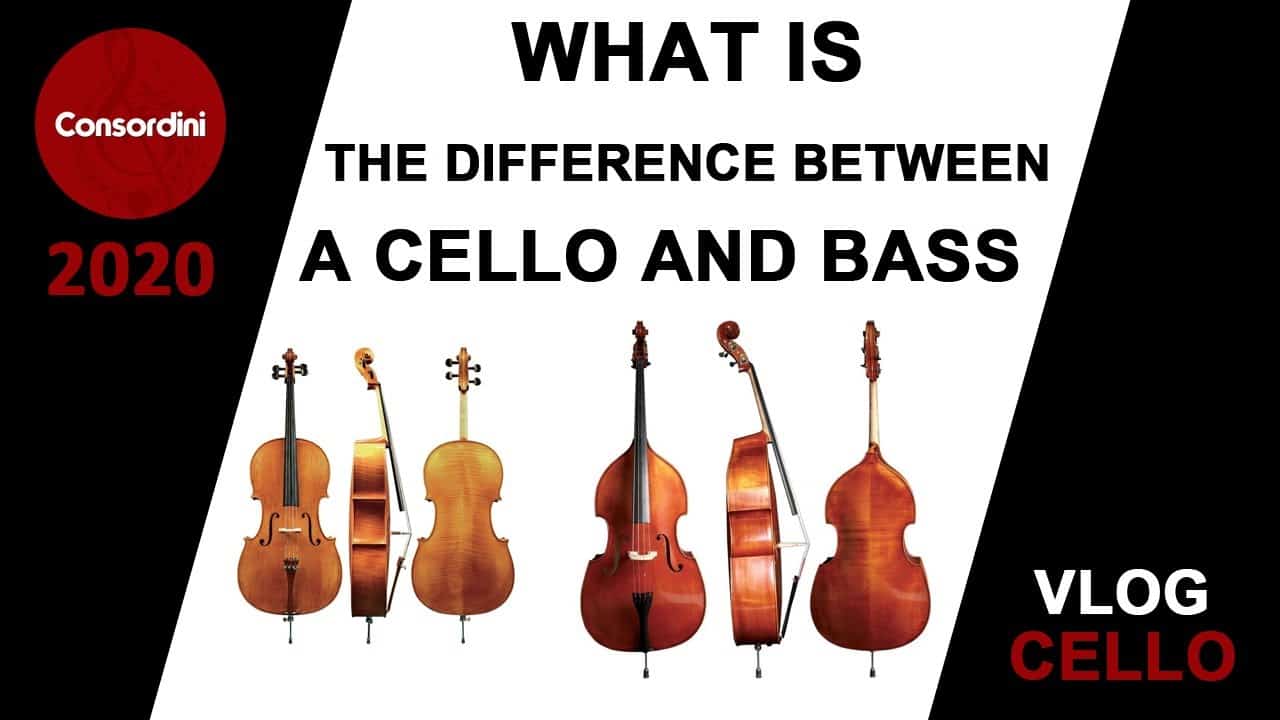Difference Between Cello and Bass
If you’re trying to decide if you should choose between cello and bass, if you’re hoping to learn one then the other, or if you’re just a casual observer of this channel and like learning information, this video will help elucidate the differences between cello and bass.
First, to get it out of the way, they are very much different instruments, and you would have to learn each mostly from scratch. They are different tunings, different postures, different bow hold, and different fingerings.
Other than that of course there are many similarities of course. They are both upright bowed fretless string instruments, and the bass – or double bass as it’s also called – was created in order to double the “bass” part that the cello provides in orchestras.
In most classical symphonies, it reads the same notes, but those notes actually sound an octave below the written pitch. Hence, it is the bass doubled, or double bass.
One of the distinctive features of the bass is its fatter sound, resulting from thicker strings. It is a beefy, full sound that is great for low drones, and – as you may know from jazz – amazing pizzicato or plucked sounds.
It has a harder time playing beautiful melody – it’s thicker strings are a bit unwieldy – but this hasn’t stopped virtuosic bass players from taking the musical world by storm, performing pieces meant for cello and even violin masterfully.
One of the helpful discussions this brings up for cello is what “bass” means in a musical context. When a cello is in a string quartet or string orchestra, it plays the low end.
This means simpler, slower musical lines, typically. It also means more parts that are the “roots” of the chords. In a chord, the name of the chord is its root, the most stable, basic note of the chord around which all the other notes give color and “meaning.”
Understanding root motion, as it’s called to go from chord to chord via this root note, is something that will then come more naturally to cellists than violinists.
In contrast to this advantage, understanding reading fast musical parts, or how to shape a melody, can be a little harder than with violinists.
And so bass instrument players – whether cello or double bass – should spend some time really learning how melody gets shaped, and use the greater chordal knowledge to understand musical context of a melody.
What’s nice about cello is it is very much in the middle of this dichotomy. It has a rich sound that is lovely to hear melodies on – and we are not even expected to play as fast as violinists typically.
We are unencumbered by the unwieldy low end of bass, though we still overlap with that range. So cellists can really understand quite a lot of what’s going on in an orchestra and help bring it to life for everyone.
So, if you’re trying to decide which to learn, consider whether you want to be part of the low end of an orchestra or group, or whether you want to play melodies more.
Also consider that a bass is much more difficult to move around, and you’ll need a hatchback car or SUV to lug it around.
There are two kinds of bows and hence bow holds the bass uses. The French style bow is similar to the cello bow – though thicker and shorter – held similarly.
The other style is German bowing. This is much more common and requires a cupped hold and gives a lot of power on up bows but is more difficult to move quickly.
The bass is also tuned in fourths, not fifths, and there is much more distance to finger in between notes. So really, there is no translatability between playing bass and cello, unfortunately.
Whichever you learn, we hope you stick around for more music lessons! Also be sure to check out Justin’s playing over at Justin Lepard Cello.



![Working with DAW Templates [Cubase Pro 10.5] 3 maxresdefault 43](https://strongmocha.com/wp-content/uploads/2020/12/maxresdefault-43.jpg)






